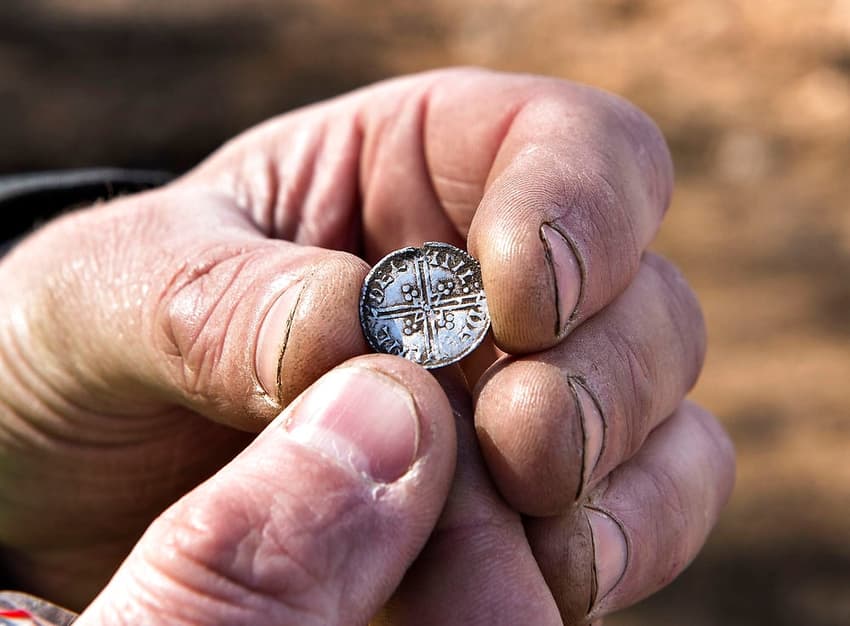'Viking treasure' of 252 silver coins found in Denmark

Coins found near Ribe in Jutland in August have proved to be part of a collection of 252 pieces of Viking silver.
The discovery of the first coins led to an archaeological investigation of the area, resulting in the coins now being in the hands of the Museum of Southwest Jutland, DR Syd reports.
The ninth-century coins are extremely rare, according to experts, with only 11 such coins previously found anywhere in the world.
“Coins of this type are ridiculously rare. The ones that have been found are very well-preserved. More than we normally see with this period,” Museum of Southwest Jutland curator Claus Feveile told Ritzau.
The August discovery was made by a man with a metal detector walking in a wetland area.
After the first 16-18 coins had been turned up, the man contacted Museum of Southwest Jutland, where experts could immediately see a special find had been made.
“That on its own was a treasure – it was more than the total number of coins we already knew of,” Feveile said.
“So we were aware that this was big. It has turned out to be even bigger,” he added.
The wet conditions in which the coins were buried helped to preserve the metal, enabling archaeologists to study markings and learn more about the Viking rulers of the time.
Feveile said that the coins were used for trade at Ribe’s market.
“Not that it should be imagined that everyone was walking around with coins like these in their pockets. If that was the case, we’d have found them in many other places too,” he said.
The coins will be displayed for a limited period at the Ribe’s Vikings Museum before being transferred to the National Museum of Denmark in Copenhagen.
READ ALSO:
Comments
See Also
The discovery of the first coins led to an archaeological investigation of the area, resulting in the coins now being in the hands of the Museum of Southwest Jutland, DR Syd reports.
The ninth-century coins are extremely rare, according to experts, with only 11 such coins previously found anywhere in the world.
“Coins of this type are ridiculously rare. The ones that have been found are very well-preserved. More than we normally see with this period,” Museum of Southwest Jutland curator Claus Feveile told Ritzau.
The August discovery was made by a man with a metal detector walking in a wetland area.
After the first 16-18 coins had been turned up, the man contacted Museum of Southwest Jutland, where experts could immediately see a special find had been made.
“That on its own was a treasure – it was more than the total number of coins we already knew of,” Feveile said.
“So we were aware that this was big. It has turned out to be even bigger,” he added.
The wet conditions in which the coins were buried helped to preserve the metal, enabling archaeologists to study markings and learn more about the Viking rulers of the time.
Feveile said that the coins were used for trade at Ribe’s market.
“Not that it should be imagined that everyone was walking around with coins like these in their pockets. If that was the case, we’d have found them in many other places too,” he said.
The coins will be displayed for a limited period at the Ribe’s Vikings Museum before being transferred to the National Museum of Denmark in Copenhagen.
READ ALSO:
Join the conversation in our comments section below. Share your own views and experience and if you have a question or suggestion for our journalists then email us at [email protected].
Please keep comments civil, constructive and on topic – and make sure to read our terms of use before getting involved.
Please log in here to leave a comment.